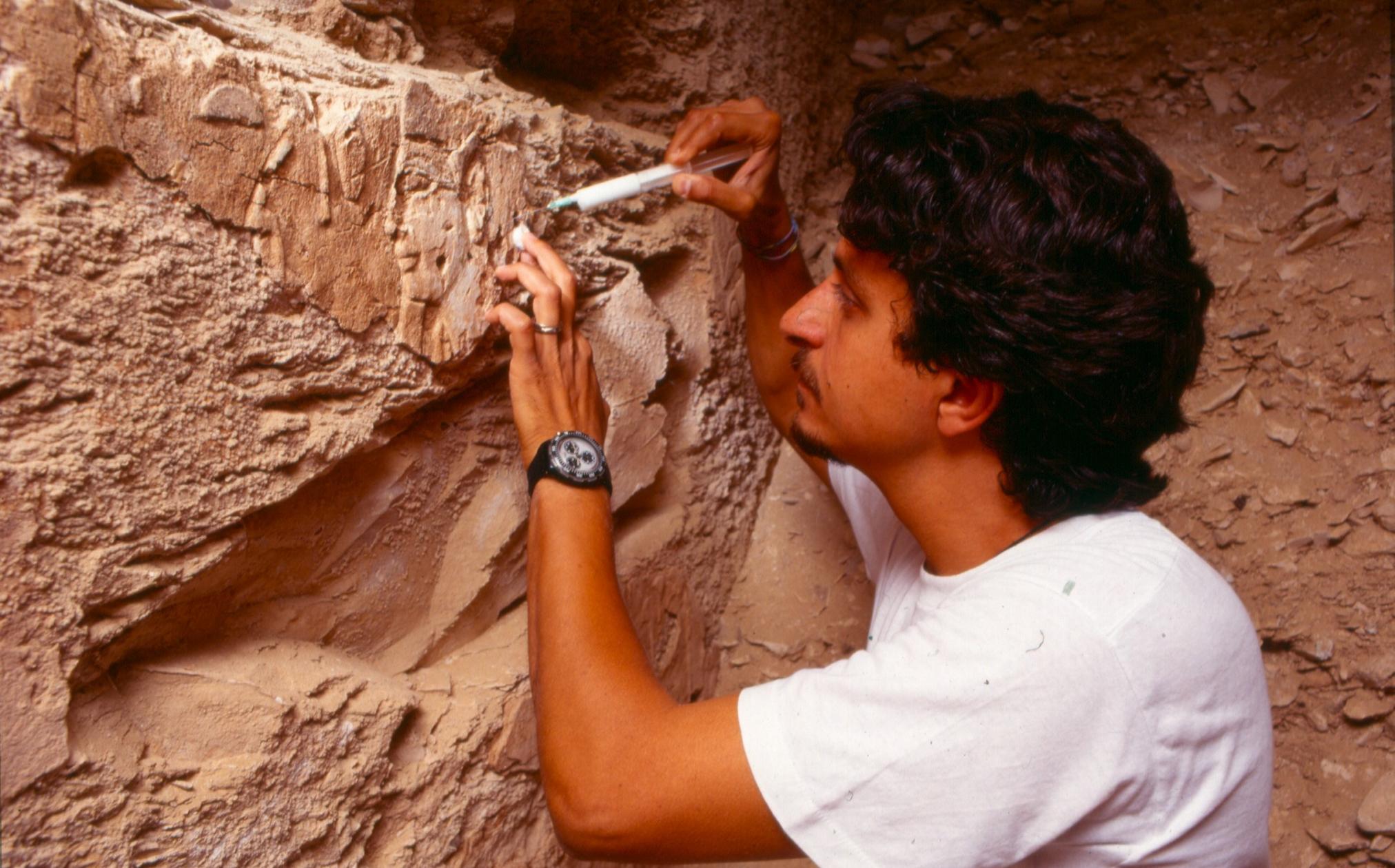The Clearing of KV 5
KV 5: Excavation
Excavating a tomb is unlike any other kind of archaeology. Archaeologists are taught to dig from the top down, moving back in time as they expose deeper and deeper layers. In a tomb, it is usually necessary to dig horizontally. This makes it very difficult to keep track of the layers and the chronological stages they represent. Work in KV 5 is made even more difficult by the hardness of the debris filling its chambers. Pickaxes must be used to cut through the debris, but brushes and dental picks are necessary to remove the fragile objects found within.
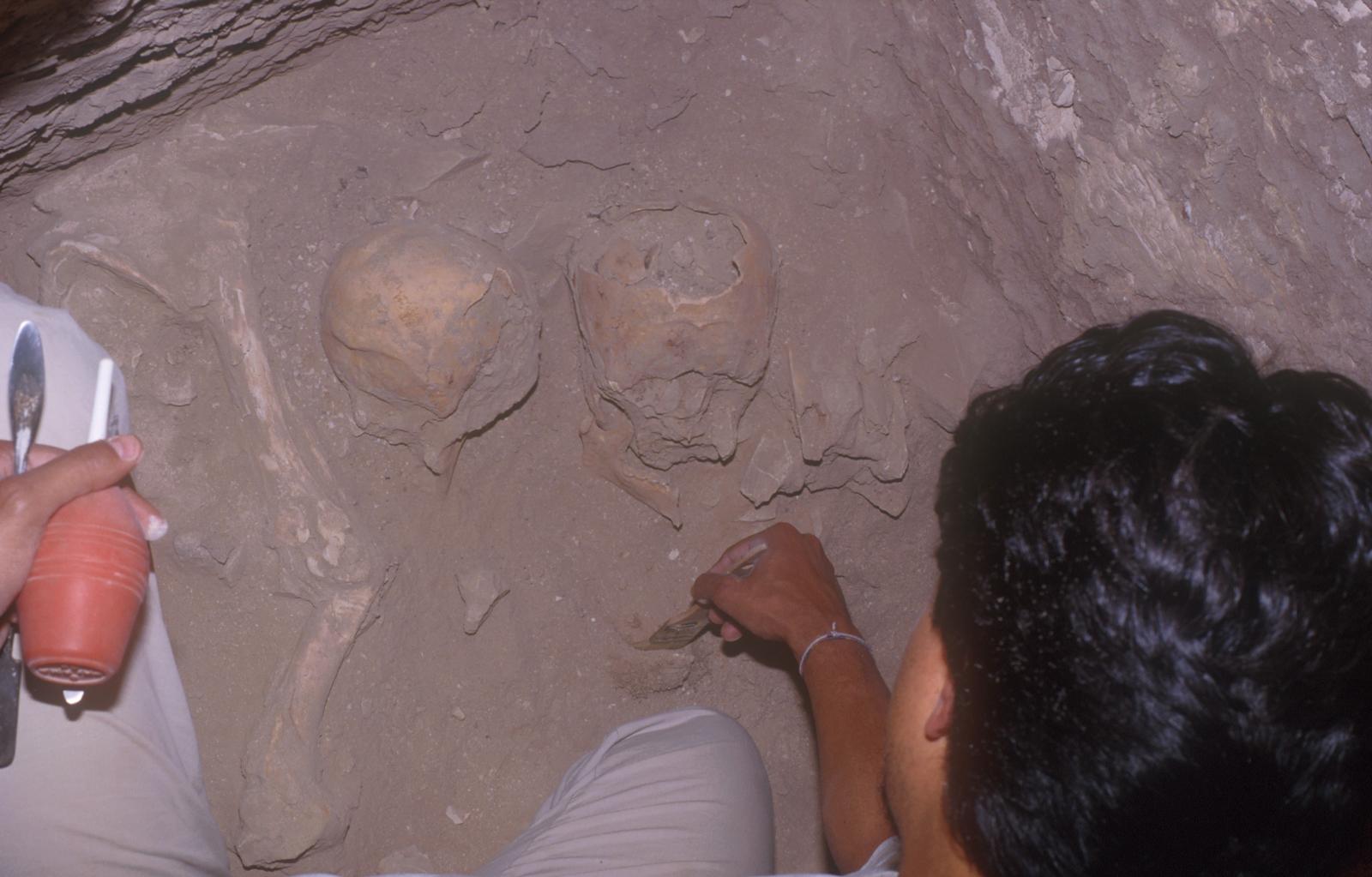
In KV 5, we never have more than two workmen digging at a time, in order to keep careful control of their progress. But depending on how far we are inside the tomb, as many as thirty men will form a bucket brigade to carry the debris up to the surface. Our workmen are recruited from nearby villages and many have worked for us for many years. Once the debris has been removed from the tomb, it is sifted to make sure no objects, however small, are missed.
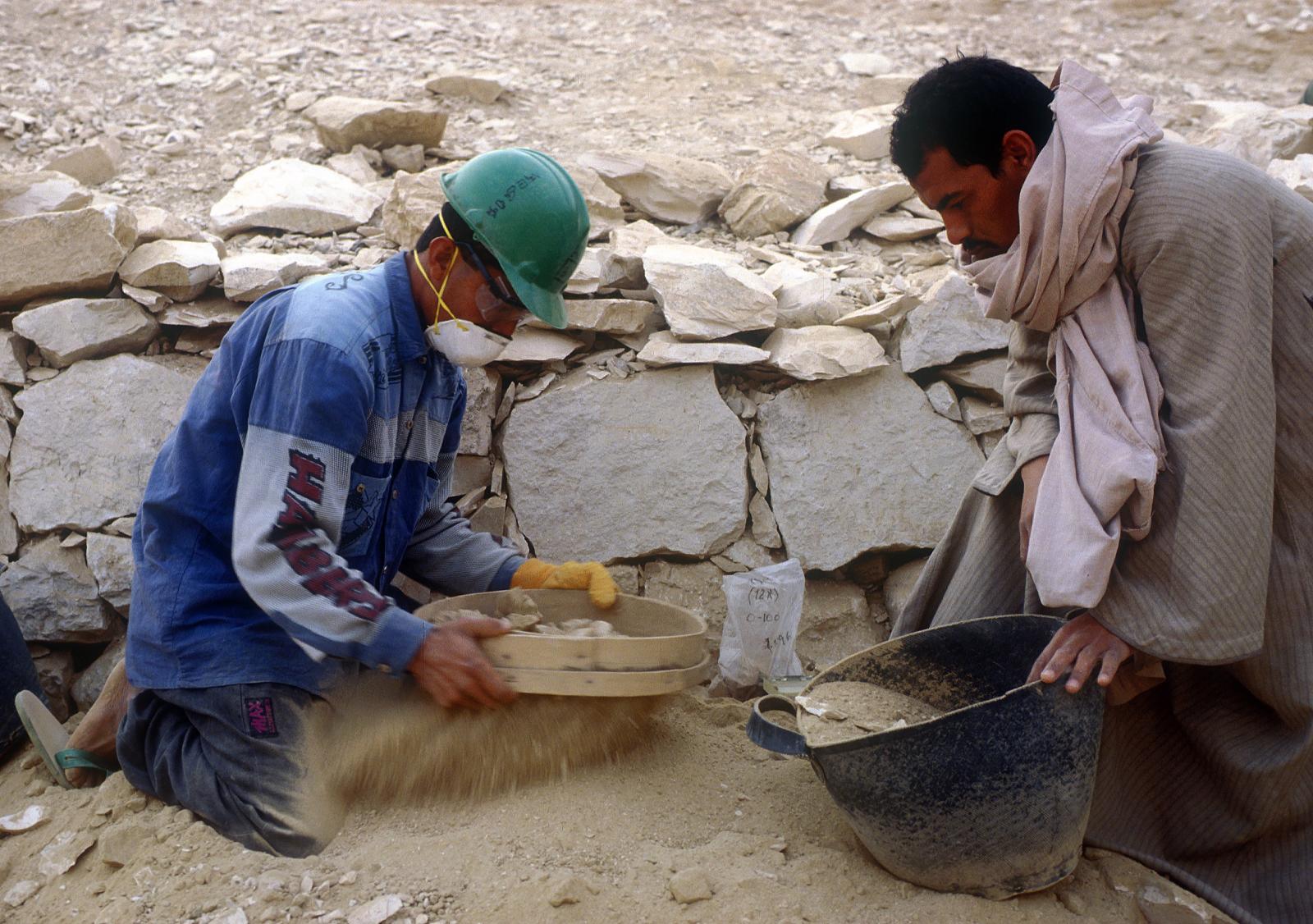
It is then loaded into a truck and dumped in the desert away from the archaeological zone. At every stage of the work, photographs are taken to record decorated walls as they are exposed. The same is done for objects lying in the debris before they are removed. A complete photographic record of the tomb is essential to help us solve the archaeological puzzles that KV 5 poses. Working conditions in KV 5 are difficult. It is hot, humid, and dusty. Spaces are cramped, and proper lighting is difficult to achieve. It may take three or four hours to set up the lamps and reflectors for a single photograph.
Not only must every wall relief and object be recorded, but they must be protected from further damage. The Theban Mapping Project conservator has one of the most difficult jobs on the project. KV 5 has suffered over the last three thousand years from ancient theft and vandalism, and most of all, from flooding. The latter has caused the painted plaster surfaces of entire walls to slide to the floor. The remaining plaster has to be cleaned and strengthened. Objects recovered, many badly broken, also have to be cleaned and pieced together.
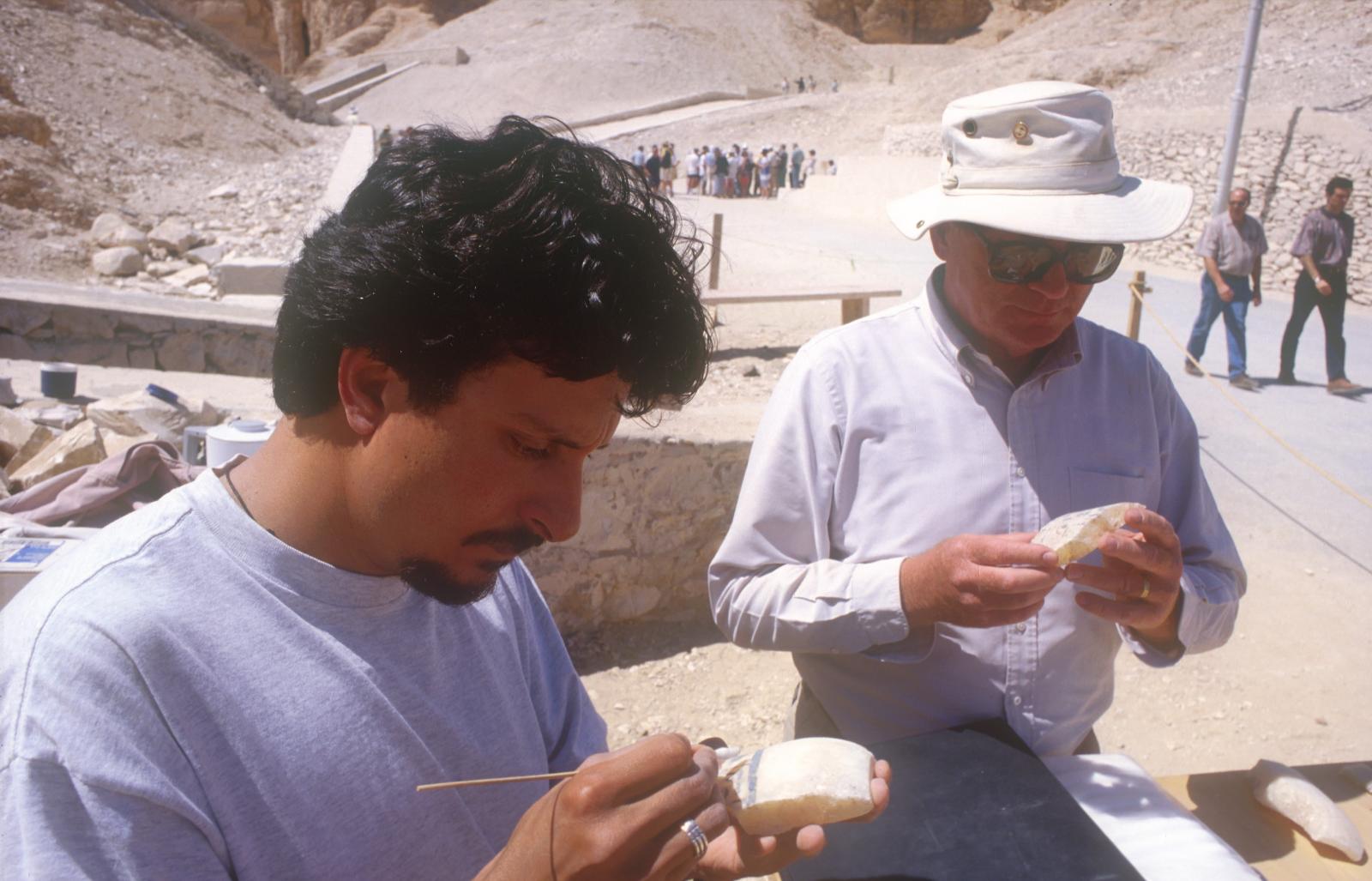
Every part of KV 5 must be carefully measured. There is evidence that the tomb was carved in several stages. Even miniscule architectural details may tell us the order in which the rooms were dug. The Theban Mapping Project is using a sophisticated Total Station to survey KV 5 and to prepare plans, sections, and three-dimensional models.
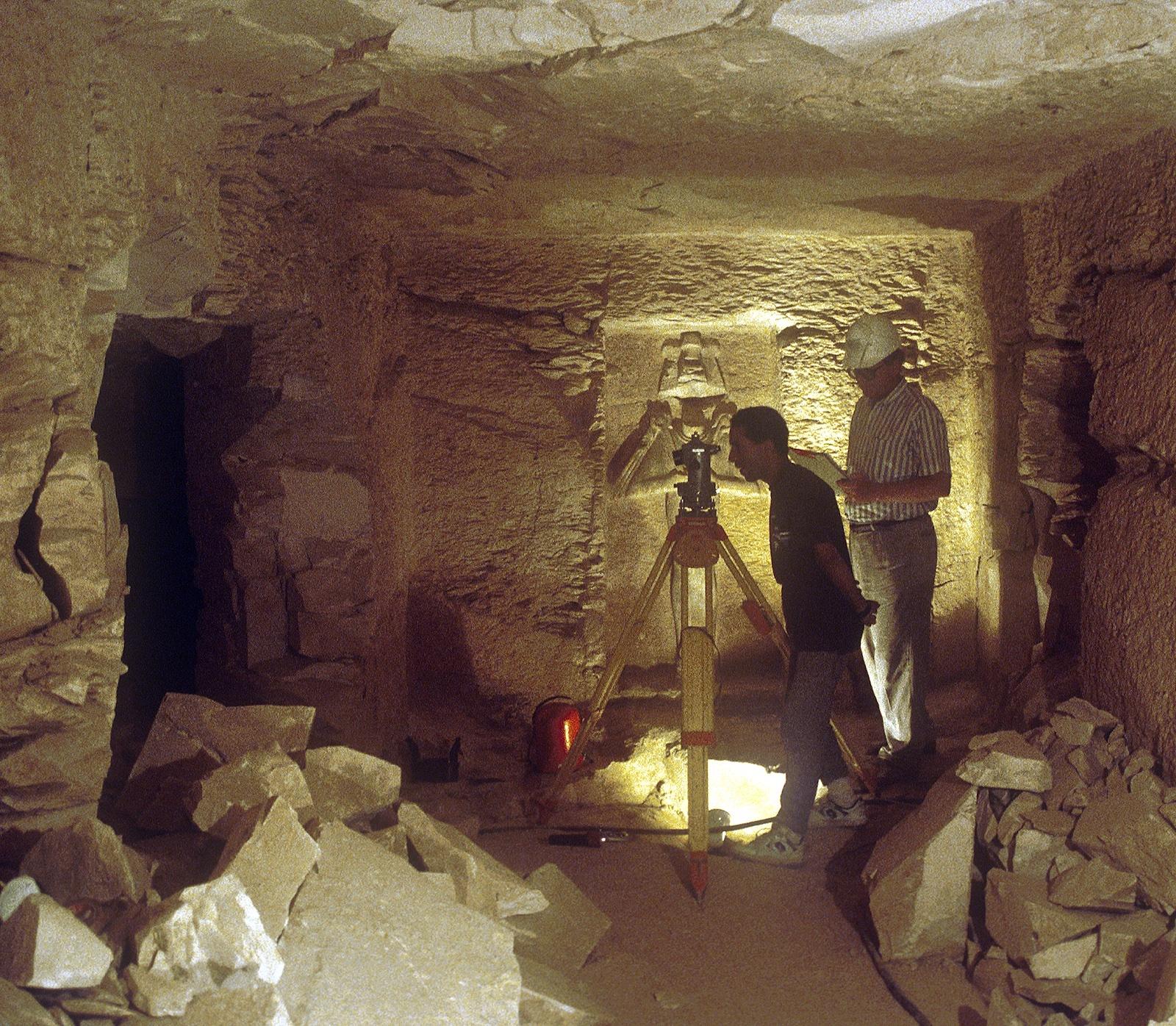
KV 5: Finds
Tens of thousands of objects have been found in KV 5, most badly broken or battered by past floods that have hit the Valley of the Kings over the last four thousand years. These floods washed tons of mud and debris into low-lying tombs, including KV 5. The objects are embedded in this "matrix" and great care must be taken to remove them safely while recording precisely where they were found. Even potsherds can provide information on chronology, the movement of trade goods, and funerary practices. A major problem is determining what was original to the tomb and what was washed in by later floodwaters. The archaeological context (where the object was found and what lay around it) can tell us the function served by a tomb chamber.
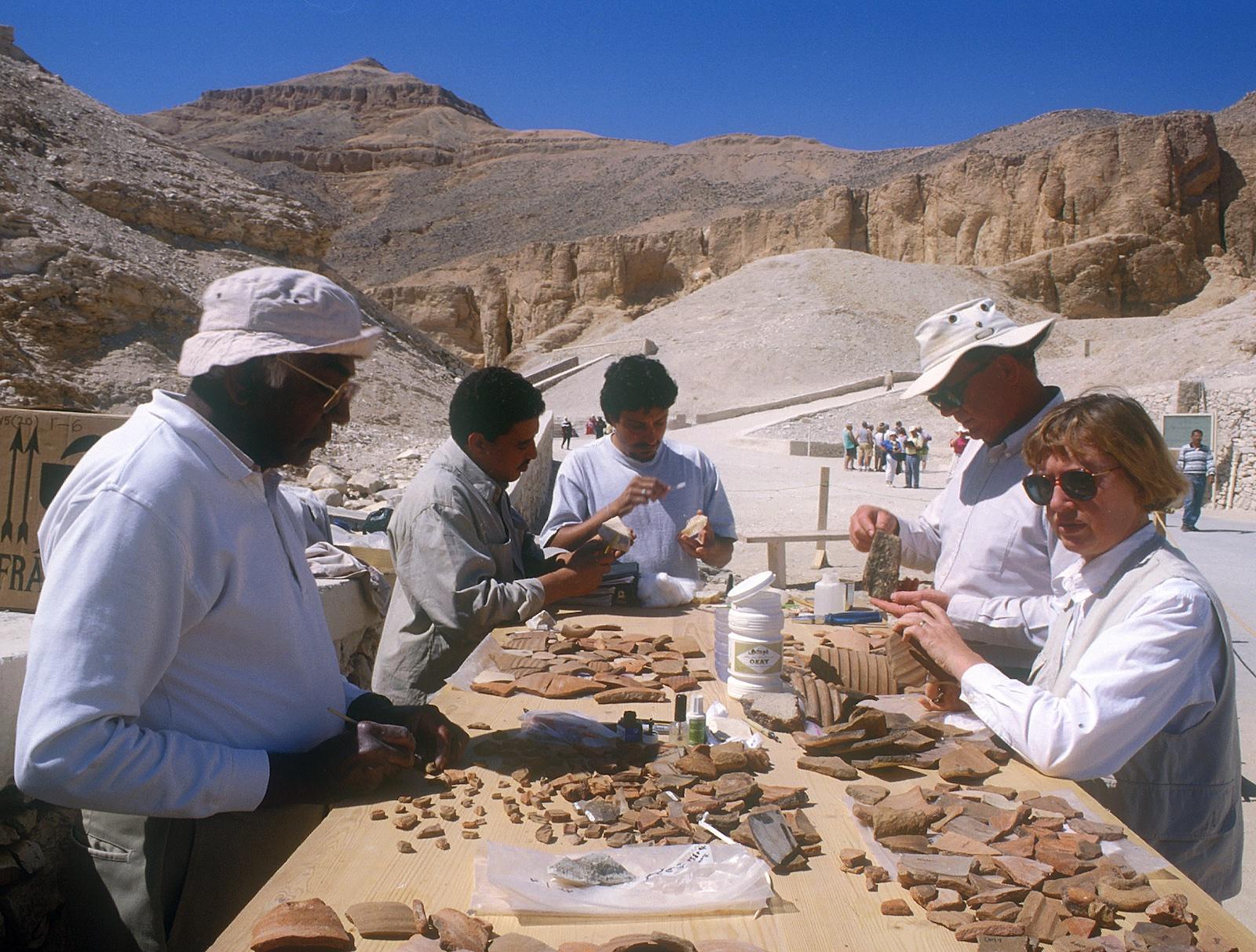
Pottery
There is no object more important to archaeological study than the humble pot. Pots can be broken, but they can never be totally destroyed. They were made in great numbers, with distinctive forms and composition. They point to both the culture and the period that produced them.
Each piece of pottery we find is cleaned, drawn, photographed, and analyzed. Pottery charts are used to record such features as shape, size, color, type of clay, decoration, find location, and archaeological context. From this, their date, source, and function can be determined. Whenever possible, pieces of the same pot are glued back together. This requires a keen eye and a trained memory. In several instances, pieces of pottery from chamber 1 were found to fit with pieces found in corridor 7. The pieces had been dispersed by the floods. Even small fragments from the rim, base, or shoulder of a pot can allow the entire vessel to be reconstructed in a drawing.
Objects
In addition to pottery, different kinds of funerary equipment were placed in tombs for the use of the deceased in the Netherworld. Canopic jars held the mummified internal organs. They were made in sets of four, one each for the liver, lungs, stomach, and intestines, and were placed in stone and wooden canopic chests. Many fragments of such jars have been found in KV 5, all but one made of alabaster. Inscriptions carved on the jars were filled with blue paint, and gave names and titles of sons of Rameses II.
Mummiform statuettes called shabtis (a word meaning "answerer") accompanied the deceased. They magically performed menial chores for the deceased and kept him well-fed, "answering" calls to work from the deceased. The shabtis from KV 5 are made of Faience or Egyptian alabaster, and often have texts and names written in ink on their bodies, exhorting them to perform their duties.
Several finely carved decorative finials were found in the tomb. They are made of bone-white alabaster, and once capped the wooden harnesses of a war-chariot. Such chariots were found intact in the tomb of Tutankhamen. In KV 5, we also find objects washed in from elsewhere in the Valley, or left behind by the men who carved and decorated the tomb. An example of the latter is an ostracon from chamber 2. The text on it records the delivery of an order of candlewicks to provide light for the artisans.
Reliefs
The relief carving in KV 5 was cut either directly into the limestone bedrock, or, where the stone was of poor quality, into a thick layer of plaster applied to the walls. There are traces of decoration on every wall and every pillar in the tomb, but because of flooding most of the scenes and inscriptions have disappeared.
Sometimes, the traces are so faint that it is impossible to photograph them. Nevertheless, Egyptologists and artists working together can frequently reconstruct scenes from the fragments. Where the wall is well preserved, a full-sized tracing of the decoration is made on plastic film.
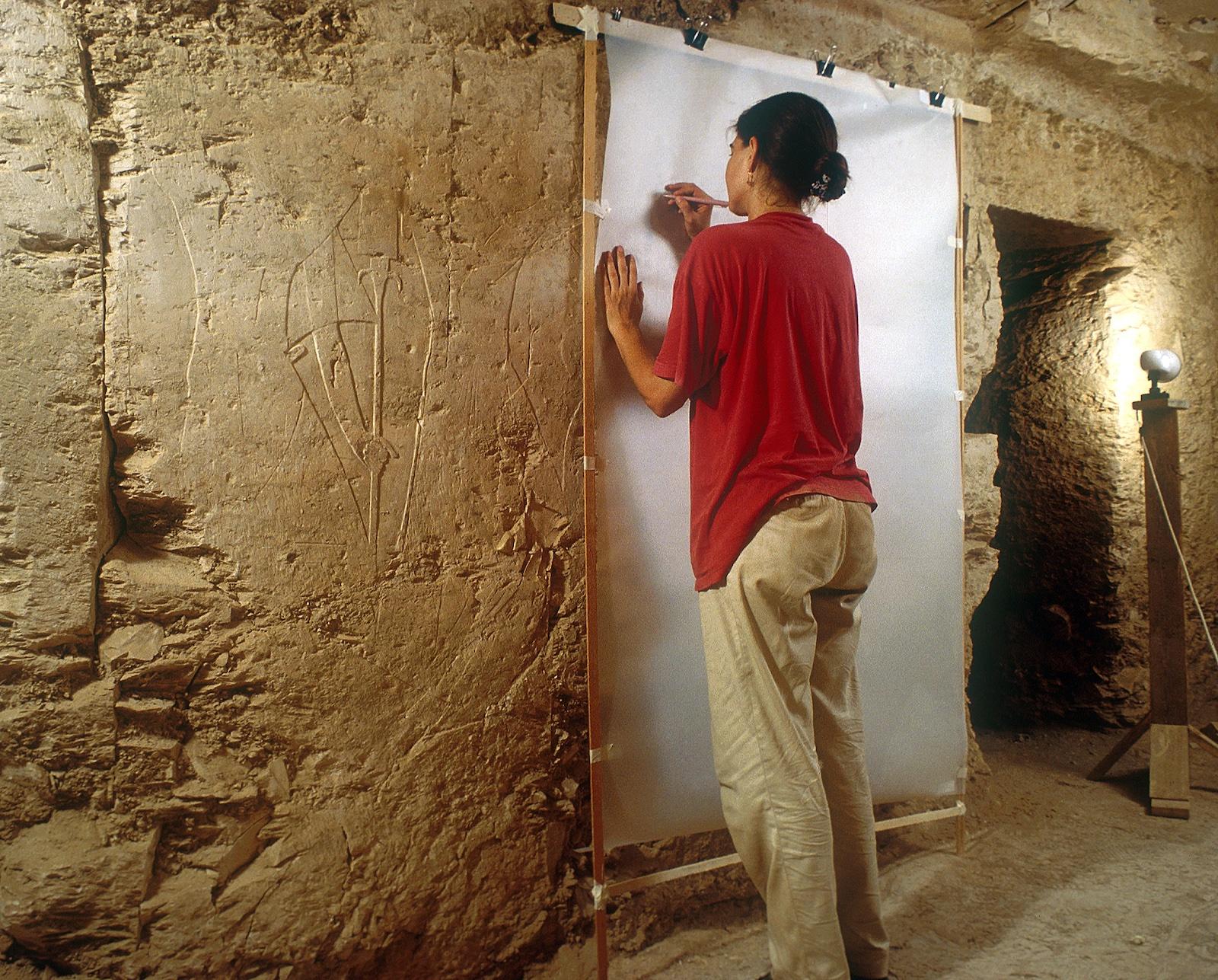
This tracing is rechecked several times, then inked, and photographically reduced. Once more it is checked against the original wall. It is then reduced again and made ready for publication. Where traces of color can be seen, the tracing will serve as the base of a watercolor painting.
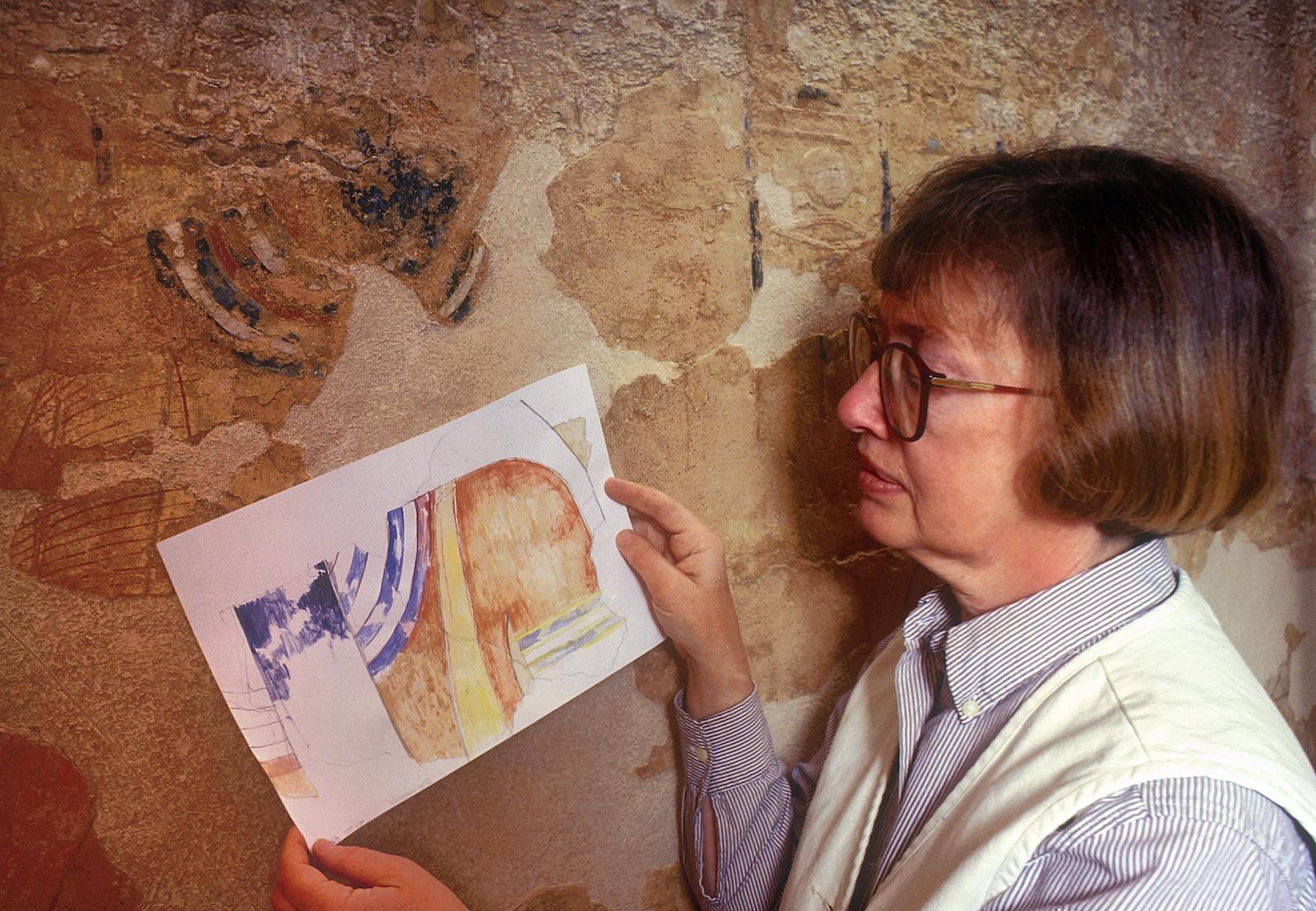
The decoration in KV 5 consists of scenes in which Rameses II presents one or more of his deceased sons to various Egyptian gods and goddesses. This, plus the funerary offerings (either depicted in the reliefs or actually placed in offering chapels), ensured that the princes made a safe journey into the netherworld and there could perform the duties expected of them. The presentation scenes in the tomb are more elaborate than those found in the tombs of the sons of other pharaohs. Rameses II's sons filled important roles in their father's court, and would be expected to take up significant duties in the afterlife.
Some of the walls in KV 5 may appear to be undecorated. But a careful examination can reveal faint traces of carving on the walls or the fragments of painted plaster that have fallen to the floor. Because Egyptian religious scenes followed well-understood conventions, it is often possible for an Egyptologist to reconstruct entire scenes from such small fragments.
Here is an example: A small piece of painted plaster was found on the floor at the base of a wall in pillared chamber 4. Its color and shape identified it as a part of a feather. The thin red lines above it are the pleats of a kilt.
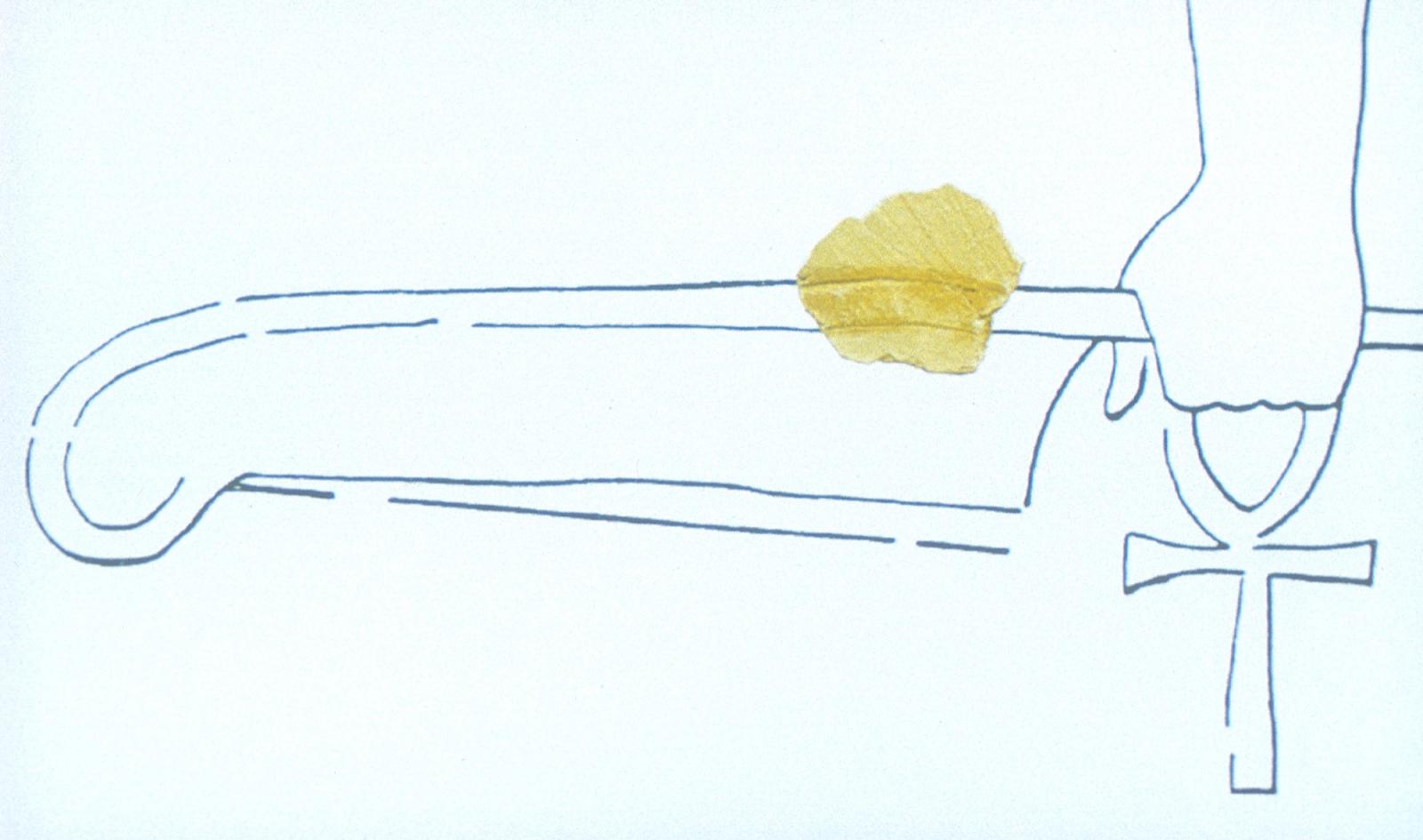
Comparing this with other relief scenes, we know that such feathers were usually held by a prince or a figure of the kings' Ka, or soul. When such figures appear in a relief, they invariably stand behind the pharaoh himself. Thus, from a piece of plaster no bigger than a postcard, we have been able to reconstruct a scene covering 6 square meters (55 square feet). From clues like this, it may be possible to recreate the decoration on an entire wall.
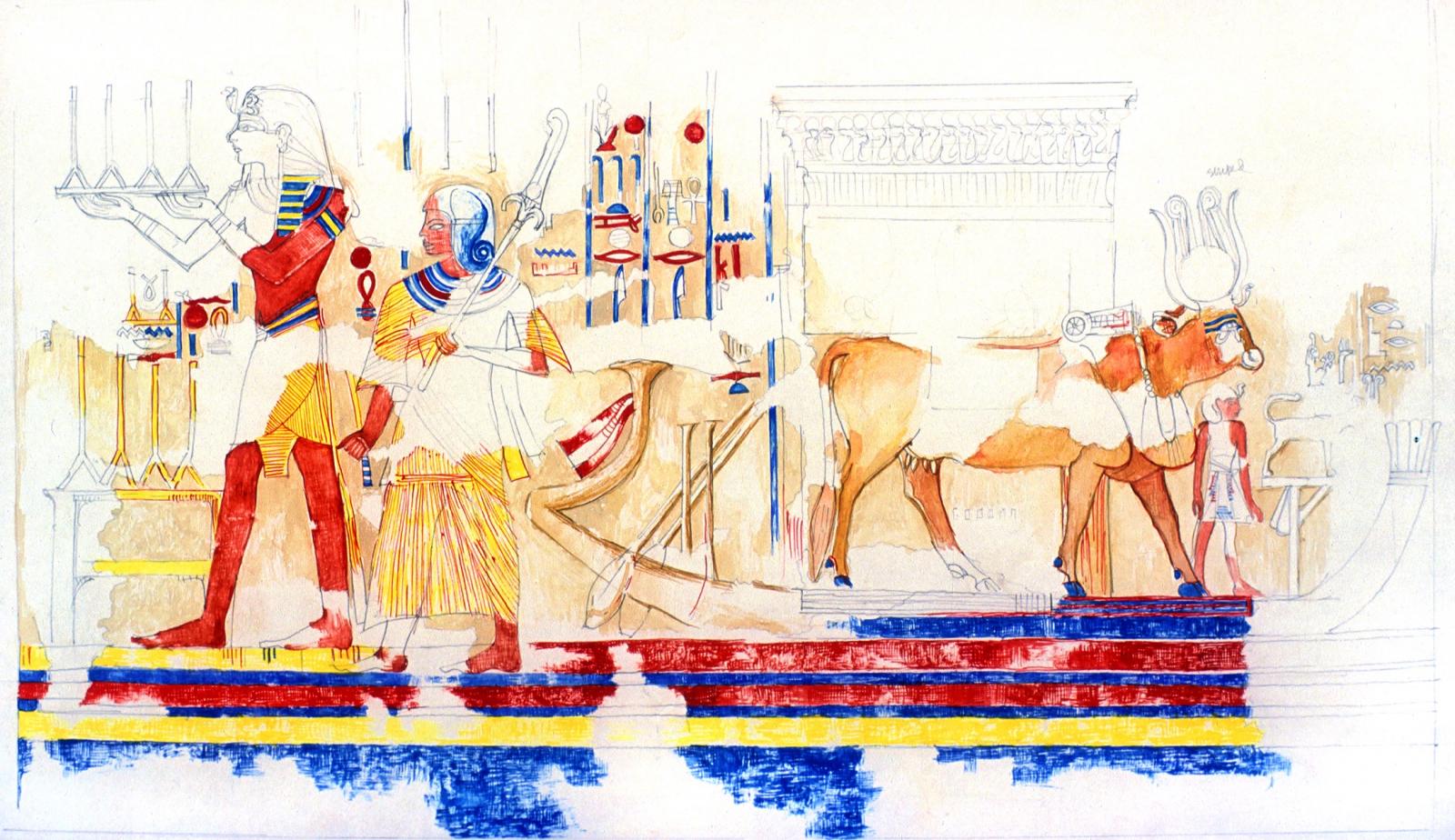
KV 5: History
"Now, Usihe and Pentwere have stripped the stones from above the tomb of Osiris King [Rameses II], the great god. The chief artisan Paneb, my father, caused men to take off stones therefrom. [He has done] exactly the same. And Kenena the son of Ruta did it in this same manner above the tomb of the royal children of Osiris King [Rameses II], the great god."
Egyptologists believe that these lines, from a papyrus now in the Turin Museum, refer to a tomb that lay near the tomb of Rameses II (KV 7) in the Valley of the Kings. The only tomb in the vicinity to which it might refer is thought to be KV 5, which lies about 40 m to the northeast of KV 7.
KV 5 may have begun in the Eighteenth Dynasty as a small, non-royal tomb, perhaps consisting only of chambers 1 and 2 and the first part of chamber 3. Chamber 3 might then have been simply a transverse corridor with a single row of pillars. We do not know when exactly it was dug or for whom, but tombs of similar, cruciform, plan were fairly common among 18th Dynasty nobles’ tombs in the Theban Qurna Necropolis.
In the Nineteenth Dynasty, Rameses II enlarged KV 5, adding chambers to accommodate the burial of a son who died before him. As other sons predeceased their father, they, too were buried here, each requiring that another burial chamber and the accompanying side-chambers be added to accommodate ceremonies and grave goods. We do not yet know in which order these new burial complexes were added to KV 5, nor do we know how many sons of Rameses II were eventually buried here. We have the names, relief carvings, and perhaps human remains of at least four. When the last son was interred and the tomb sealed for the final time, KV 5 lay untouched until at some point--a month, a year, a century later--tomb robbers entered and began looting its contents. That looting seems to have continued for some time.
Theft is not the only indignity the tomb has suffered. In the 3,000 years since KV 5 was finally sealed, at least eleven flash floods, caused by heavy rainfall, have washed tons of debris into its chambers, filling them nearly to the ceiling, and destroying much of the decoration on their walls. The entrance to KV 5 seems to have remained visible, however, and its first five or six chambers—the few that were accessible-- were visited by many travelers in the 19th century CE. The tomb appears on several sketch maps of the Valley of the Kings from that time, and it was assigned a tomb number, KV 5, by John Gardner Wilkinson when he numbered the Valley’s known tombs early in the 1820s. An English traveler, James Burton, crawled into the tomb’s first five or six debris-packed chambers in 1825, but he could see no objects or decoration and quickly abandoned what he described as an unimportant tomb of a minor person.
Howard Carter saw KV 5’s entrance in 1902. He, too, thought the tomb of no value, and dumped debris over it from his own excavations at the tomb of Tutankhamun, a few meters away. It was not until 1987 that the entrance to KV 5 was seen again, when it was relocated by the Theban Mapping Project. The TMP was working around the mouth of the Valley of the Kings because of a government decision to widen the roadway there. The TMP knew from Burton’s notes that KV 5 lay somewhere in this area, and was concerned that it might be damaged by the proposed work. No one at the time had any idea of KV 5’s real importance.
Using geophysical equipment and old-fashioned archaeological digging, the TMP found the entrance to KV 5 in 1987, after a week of exploration. Crawling inside and carefully examining the accessible walls and ceiling, it soon became clear that KV 5 contained not just the six rooms first seen by Burton but many more halls, corridors, and chambers. Indeed, in 1995, the TMP was able to announce that KV 5 was the largest tomb ever found in the Valley of the Kings. From the 87 rooms described in that announcement, the tomb has since grown and now is known to have at least 120 rooms, probably more.
Careful cleaning of the tomb’s decorated but badly-damaged walls revealed the names of several sons of Ramesses II and fragments of four Canopic jars found in the flood debris in Chamber 2 confirmed those and gave two more, a total of four. The names are: Amunherkhepeshef, Rameses, Sethy, and Mery-Atum. Of the thirty sons of Rameses II, these are numbers 1, 2, 9, and 16 in lists of the sons of born to his principal wives. One complete human skeleton and the fragments of three others were found dumped in a Burial pit in Chamber 2, and a study by forensic anthropologists identify two as ”most probably” related to Rameses II, a third as “likely” related, and the fourth as too fragmentary to tell. They may be the remains of the four sons whose names we have found on walls and canopic jars.
Future work on KV 5 material will include the detailed study of the thousands of potsherds that have been found in nearly every chamber. They may help determine the function of those chambers and the history of the floods that seriously damaged them.
The clearing of further chambers in KV 5, work delayed by a number of factors, not least of which are available funds and, most recently, covid, will look first at corridors 10 and 16 and their multiple side-chambers. Continued study of the traces of decorated plaster on walls throughout the tomb—a painstakingly slow process—will continue, as will geophysical searches for possible voids beyond the floors and walls of known chambers. We remain certain that KV 5 has still more secrets to share.

